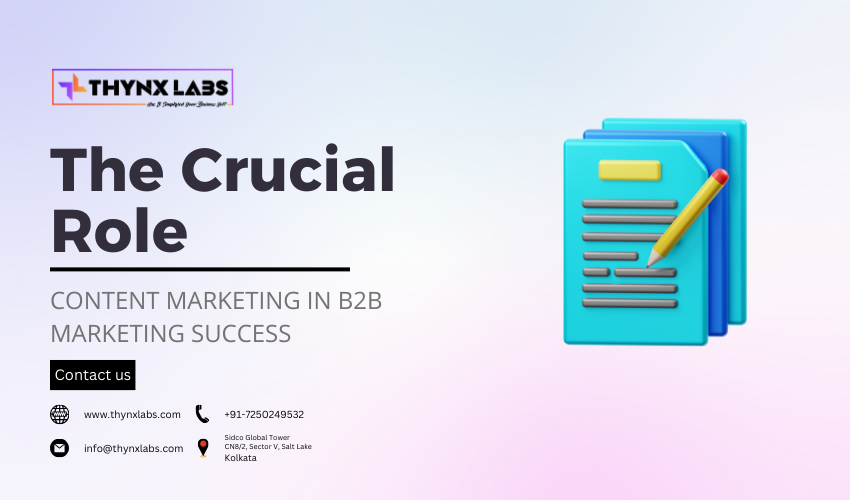The Ultimate Guide to B2B Digital Marketing
In the realm of business-to-business (B2B) marketing, the digital landscape has become a dynamic and essential arena for reaching and engaging potential clients. With the rise of online platforms and the evolution of digital strategies, mastering the art of B2B digital marketing has never been more crucial. This comprehensive guide will walk you through the fundamental aspects, strategies, and best practices, empowering you to navigate the complex world of B2B digital marketing successfully.
Understanding B2B Digital Marketing
What is B2B Digital Marketing?
B2B digital marketing refers to the use of digital channels and techniques to promote products and services to other businesses. Unlike business-to-consumer (B2C) marketing, B2B marketing focuses on building relationships, generating leads, and fostering collaborations between businesses.
Why B2B Digital Marketing Matters
- Global Reach: Digital platforms provide a global audience, enabling businesses to expand their reach beyond geographical boundaries.
- Cost-Effectiveness: Digital marketing offers a cost-effective way to reach a targeted audience compared to traditional marketing methods.
- Data-Driven Insights: Digital marketing provides valuable data and analytics, allowing businesses to measure the effectiveness of their campaigns and make data-driven decisions.
Key Strategies for B2B Digital Marketing
1. Search Engine Optimization (SEO)
Optimize your website and online content to rank higher in search engine results pages (SERPs). Conduct keyword research, optimize meta tags, and create high-quality, relevant content.
2. Content Marketing
Create valuable and informative content such as blog posts, articles, whitepapers, and videos. Content marketing establishes your authority, attracts organic traffic, and nurtures leads.
3. Social Media Marketing
Utilize social media platforms like LinkedIn, Twitter, and Facebook to connect with businesses, share industry insights, and engage with potential clients. Social media fosters relationships and enhances brand visibility.
4. Email Marketing
Develop targeted email campaigns to nurture leads, share relevant content, and promote products or services. Personalize your emails and use automation to streamline your email marketing efforts.
5. Pay-Per-Click (PPC) Advertising
Run targeted PPC campaigns on platforms like Google Ads and social media channels. PPC ads ensure immediate visibility and can be highly targeted based on demographics and user behavior.
6. Influencer Marketing
Collaborate with industry influencers and thought leaders to promote your products or services. Influencer marketing adds credibility and expands your reach to a wider audience.
7. Account-Based Marketing (ABM)
Focus your marketing efforts on specific high-value accounts. ABM tailors marketing strategies to individual accounts, fostering personalized and meaningful relationships.
8. Mobile Optimization
Ensure your website and digital content are optimized for mobile devices. With the increasing use of smartphones, mobile-friendly experiences are essential for user engagement.
Measuring Success and Optimization
1. Key Performance Indicators (KPIs)
Identify relevant KPIs such as website traffic, conversion rates, lead generation, and customer acquisition cost. Regularly monitor these metrics to gauge the effectiveness of your digital marketing campaigns.
2. A/B Testing
Conduct A/B tests on various elements of your digital campaigns, including email subject lines, ad copy, and landing pages. A/B testing helps optimize your strategies for better performance.
3. Continuous Optimization
Digital marketing is iterative. Analyze data, gather insights, and optimize your strategies continuously. Stay updated with industry trends and adjust your approach accordingly.
Conclusion
Mastering B2B digital marketing is a multifaceted journey that requires a deep understanding of your audience, strategic planning, and continuous adaptation to market trends. By embracing SEO, content marketing, social media, email campaigns, and emerging technologies, businesses can thrive in the digital landscape, build meaningful connections, and drive sustainable growth.


